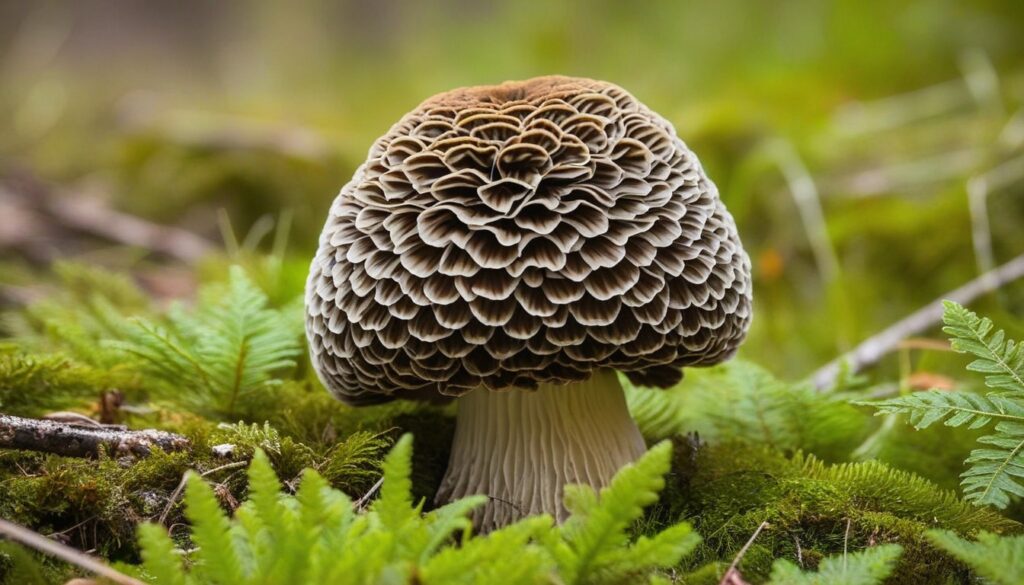Morel mushroom hunting is a popular activity among foragers and nature enthusiasts in search of these elusive and delicious fungi. While many may associate morels with the Pacific Northwest or the Midwest, some may be wondering whether they can be found growing in Georgia.
The good news is that morel mushrooms do grow in Georgia, offering foragers the opportunity to explore the state’s diverse landscapes and discover these prized mushrooms. In this comprehensive foraging guide, we will explore the key factors and locations where morel mushrooms can be found in Georgia, as well as expert tips for successful foraging and ethical considerations to keep in mind.
Key Takeaways
- Morel mushrooms can be found growing in Georgia.
- Understanding the characteristics and habitat of morel mushrooms can increase your chances of successful foraging.
- Seasonality and weather patterns play a crucial role in the availability of morel mushrooms.
- There are suitable locations and expert tips for morel mushroom hunting in Georgia.
- It’s important to follow regulations and practice ethical foraging when searching for morel mushrooms.
Understanding Morel Mushrooms
Morel mushrooms are one of the most highly sought-after and prized fungi in the world. They are beloved by foragers and chefs alike for their unique appearance, flavor profile, and versatility in the kitchen.
These mushrooms have a distinct conical shape with a honeycomb-like cap that ranges in color from brown to black. Their flavor is earthy and nutty, with a slightly smoky quality that pairs well with a variety of ingredients and cooking techniques.
Morel mushrooms are known for their rarity and elusiveness, which only adds to their appeal. They are commonly found growing in wooded areas and near riverbanks, favoring temperate climates and moist soils. They are typically in season during the spring months, making them a prized delicacy for foragers and chefs alike.
Whether you are new to the world of foraging or a seasoned expert, understanding the unique characteristics of morel mushrooms is essential to successfully hunting these elusive fungi.
The Habitat of Morel Mushrooms
Morel mushrooms are a rare and elusive delicacy that can be found in Georgia’s diverse and unique landscapes. These mushrooms favor specific environmental conditions and geographical features to grow and flourish in abundance. Understanding the preferred habitat of morel mushrooms can offer valuable insights that can help foragers locate them successfully.
Environmental Conditions
Morel mushrooms typically grow in areas with a moderate climate that offer both moisture and warmth. They prefer soil that is rich in organic matter, such as decomposing leaves or wood. The ideal temperature range for morel mushroom growth is between 50 and 65 degrees Fahrenheit. Air humidity levels also play a crucial role in their growth, with relative humidity between 50% and 75% being optimal.
Geographical Features
Morel mushrooms favor specific geographical features in different regions of Georgia. In the northern mountains, they can be found growing in the vicinity of apple, ash, and elm trees. In the central part of the state, they tend to grow near oak, hickory, and tulip trees. In the southern part of the state, morels grow near tulip poplar and sycamore trees, along with riverbanks, creek beds, and moist hillsides.
|
Geographical Area |
Preferred Trees |
|---|---|
|
Northern Georgia |
Apple, ash, and elm |
|
Central Georgia |
Oak, hickory, and tulip |
|
Southern Georgia |
Tulip poplar, sycamore, and near riverbanks and creek beds |
By understanding the environmental and geographical preferences of morel mushrooms, foragers can locate potential hunting grounds and increase their chances of success.
Seasonality and Weather Patterns
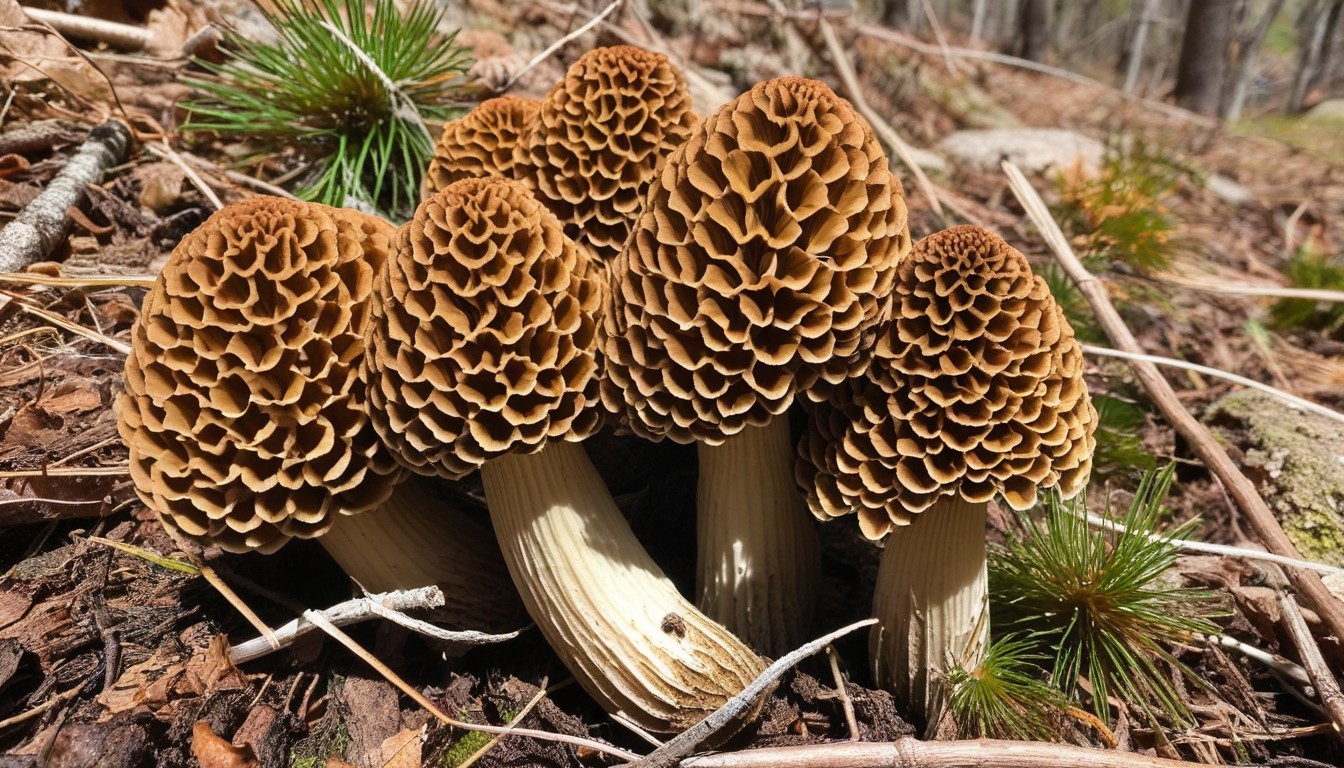
Understanding the ideal morel mushroom hunting season in Georgia can greatly increase your chances of a successful foraging adventure. Typically, the season lasts from late March to early May, but certain regions may have slightly different timings, depending on weather patterns.
Morel mushrooms thrive in moist, humid conditions, and require soil with the right balance of nutrients and pH levels for successful growth. Rainfall during the winter and early spring seasons create ideal moisture levels, leading to a more fruitful crop.
Temperature also plays a crucial role in morel mushroom growth. Warmer temperatures above 50°F, following a cooler period, are optimal for the fungi to emerge from the ground and mature.
Weather Conditions in Georgia for Morel Mushrooms
|
Weather Condition |
Impact on Morel Mushroom Hunting |
|---|---|
|
Rainfall |
Heavy rainfall can lead to flooding and waterlogged soil, which can inhibit morel mushroom growth |
|
Drought |
Drier weather can lead to a decreased number of morel mushrooms, as they require consistent moisture levels |
|
Temperature |
Temperature fluctuations can impact the growth and maturation stages of morel mushrooms, leading to unpredictable timing and availability during the season |
It’s important to keep an eye on local weather reports and be aware of any sudden changes in climate when planning your morel mushroom hunting trips in Georgia. By understanding the importance of weather patterns on their growth, you can increase your chances of a successful foraging adventure.
Suitable Locations for Morel Mushroom Hunting
Georgia is home to some of the most diverse and scenic landscapes in the country, offering foragers a multitude of options for morel mushroom hunting. Not all locations are created equal, however, with some areas proving to be more fruitful than others. Here are some of the top locations to focus your foraging efforts in search of morel mushrooms:
|
Location |
Best Time to Forage |
Tips and Tricks |
|---|---|---|
|
Chattahoochee National Forest |
Mid to Late Spring |
Look for south-facing slopes and near riverbanks and streams. Morel mushrooms tend to grow in areas that receive plenty of sunlight and moisture. |
|
Oconee National Forest |
Mid to Late Spring |
Search for morel mushrooms near the base of tulip poplar, hickory, and ash trees. Keep an eye out for recently burned areas or storm-damaged forests, which can create ideal growing conditions for these mushrooms. |
|
Blue Ridge Mountains |
Mid to Late Spring |
Check out the forest floor around mountain streams and creeks, where morel mushrooms can thrive in moist, shaded areas. Be prepared to hike into the mountains and look for areas with plenty of downed logs and leaf litter, which are signs of a healthy ecosystem for morel mushrooms. |
Remember to always follow ethical foraging practices and obtain any necessary permits or permissions before embarking on your morel mushroom hunting adventure. With a little bit of luck and a keen eye, you may just uncover some of the most coveted fungi in Georgia.
Expert Tips for Successful Morel Mushroom Foraging
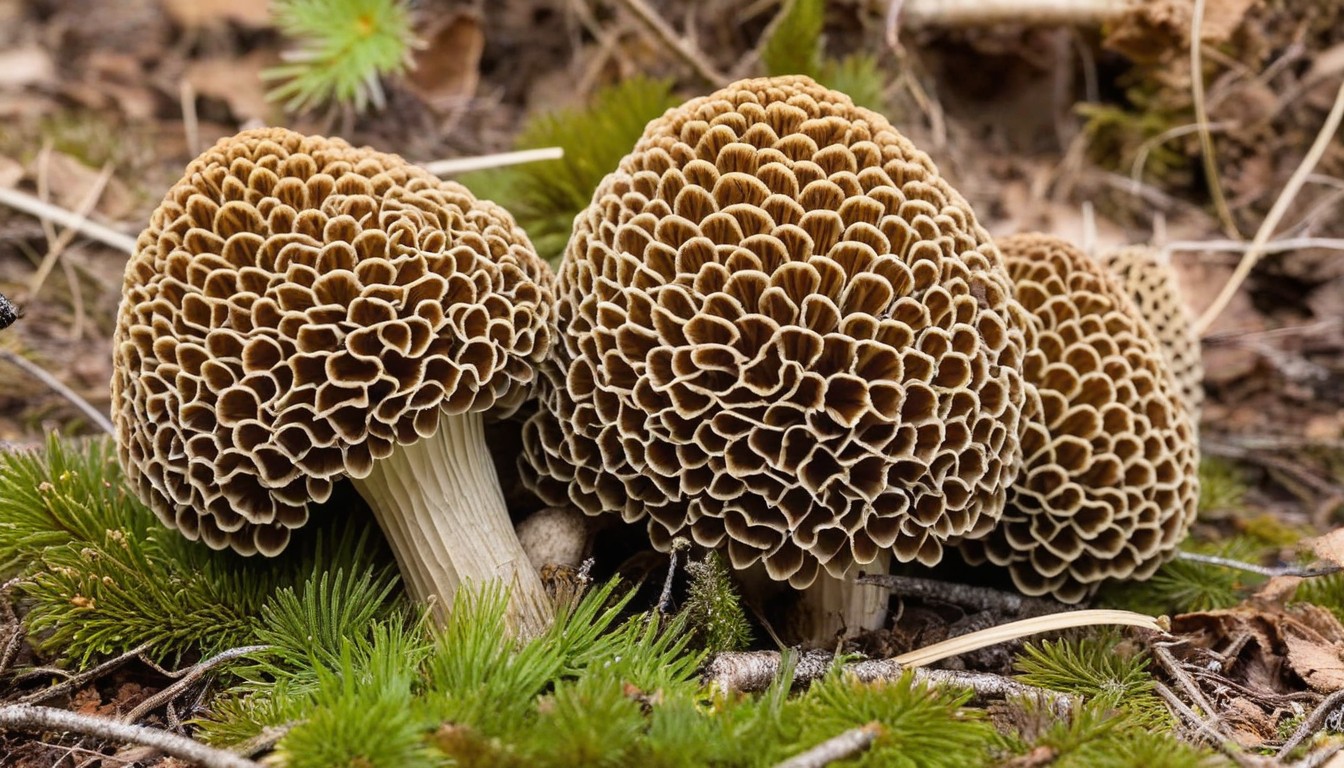
Foraging for morel mushrooms in Georgia can be a thrilling and rewarding experience. However, like any hunting trip, finding these elusive fungi can be a difficult task. Here are some expert tips to help you optimize your foraging adventure:
1. Location, Location, Location
The key to finding morel mushrooms lies in understanding their preferred locations. These mushrooms prefer to grow near specific trees such as elm, ash, and poplar, and are often found in moist environments. Look for areas with ample rainfall and avoid locations with too much direct sunlight. Riverbanks and slopes with north-facing slopes are also excellent places to start your search.
2. Timing is Everything
The season for morel mushrooms in Georgia begins in mid-April and lasts until mid-May. During this period, the weather can be a determining factor in the availability of mature mushrooms. The best time to start foraging is after a few warm, sunny days, which helps hasten their growth. Avoid foraging too early in the morning or too late in the evening, as morels can be challenging to spot in low light conditions.
3. The Right Equipment
Certain equipment can be beneficial when foraging for morel mushrooms. A basket or mesh bag will help keep your harvest fresh and prevent moisture from causing spoiling. A small knife or scissors can be handy for cutting stems rather than pulling them out of the ground, which can damage the mushroom and the ecosystem surrounding it. Wearing appropriate clothing and shoes is also essential, as you’ll be navigating uneven terrains and potentially encountering obstacles in your path.
4. Pay Attention to Detail
When foraging for morel mushrooms, hone your observation skills and be attentive to the finer details. Often, morels can be challenging to spot, as they blend in with their surroundings. Look for signs of spring growth, such as newly budding flowers and green vegetation, as they often indicate the presence of morel mushrooms.
5. Be Respectful and Ethical
During your foraging adventure, be sure to follow rules and regulations for gathering wild mushrooms. Only harvest mushrooms that you can recognize and identify correctly, and avoid touching or disturbing other flora and fauna that may be present. Never take more than what you need, as morels play a vital role in their respective ecosystems and are often hunted by other species.
By following these expert tips, you can increase your chances of a successful morel mushroom hunting trip in Georgia. Always remember to be patient, persistent, and enjoy the beauty of nature around you. Happy foraging!
Regulations and Ethical Considerations
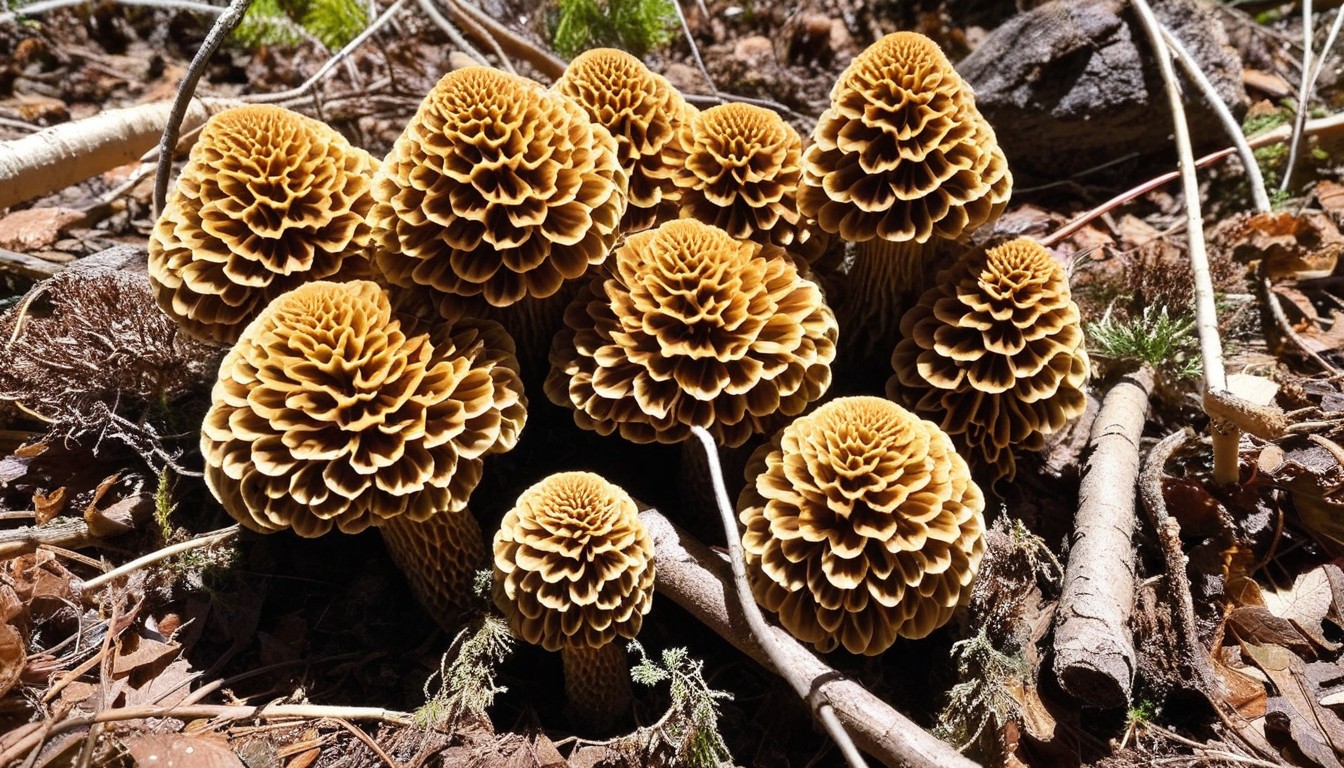
When it comes to foraging for morel mushrooms in Georgia, it is essential to understand the regulations and guidelines in place to protect these valuable natural resources. Many states have established rules and permits for mushroom hunting, and Georgia is no exception. Violating these regulations can result in fines and even criminal charges.
To ensure you abide by legal requirements, you must obtain the necessary permits and review the morel mushroom hunting regulations set forth by the Georgia Department of Natural Resources. These regulations have been established with the conservation of morel mushrooms and their habitats in mind. As a responsible forager, you should also follow ethical foraging practices, leaving no trace and taking only what you need.
It is also worth noting that morel mushroom hunting on private land requires the landowner’s permission. Additionally, national parks and wildlife sanctuaries may have their own sets of rules and permits in place for mushroom hunting, which you should take into account before planning your foraging trip.
|
Regulations and Guidelines: |
Considerations: |
|---|---|
|
Obtain necessary permits before foraging |
Follow ethical foraging practices |
|
Review hunting regulations set by the Georgia Department of Natural Resources |
Take only what you need |
|
Obtain landowner permission when hunting on private property |
Leave no trace |
|
Take into account national park and wildlife sanctuary rules |
Respect the natural environment |
By following the regulations and guidelines for morel mushroom hunting in Georgia, you can help preserve and protect these valuable natural resources while enjoying a fulfilling foraging experience.
Poisonous Look-Alikes
While morel mushrooms are a delicious and sought-after edible, it’s essential to be able to differentiate them from their potentially toxic look-alike species. In Georgia, common poisonous mushrooms that resemble morels include the false morel and the early morel.
False Morels
False morels have a wrinkled brain-like cap, and their stem is more like a solid, cottony stem, unlike the hollow stem of a true morel. False morels are known to contain the toxin gyromitrin, which can cause vomiting, diarrhea, and other symptoms if ingested in large amounts.
Early Morels
Early morels often bear strong visual similarities to true morels, but there are a few key differences to keep in mind. Their caps are slightly pointed, and the ridges of their caps don’t run all the way down the stem. Their stem is also a bit thicker and might have a slight purplish tint. While early morels are not deadly, they are known to cause abdominal pain and other symptoms in some people.
When foraging for morel mushrooms, always take the time to inspect each mushroom carefully and cross-reference with identification resources or consult with an experienced forager to ensure you are harvesting safe and delicious mushrooms.
Culinary Delights: Cooking with Morel Mushrooms
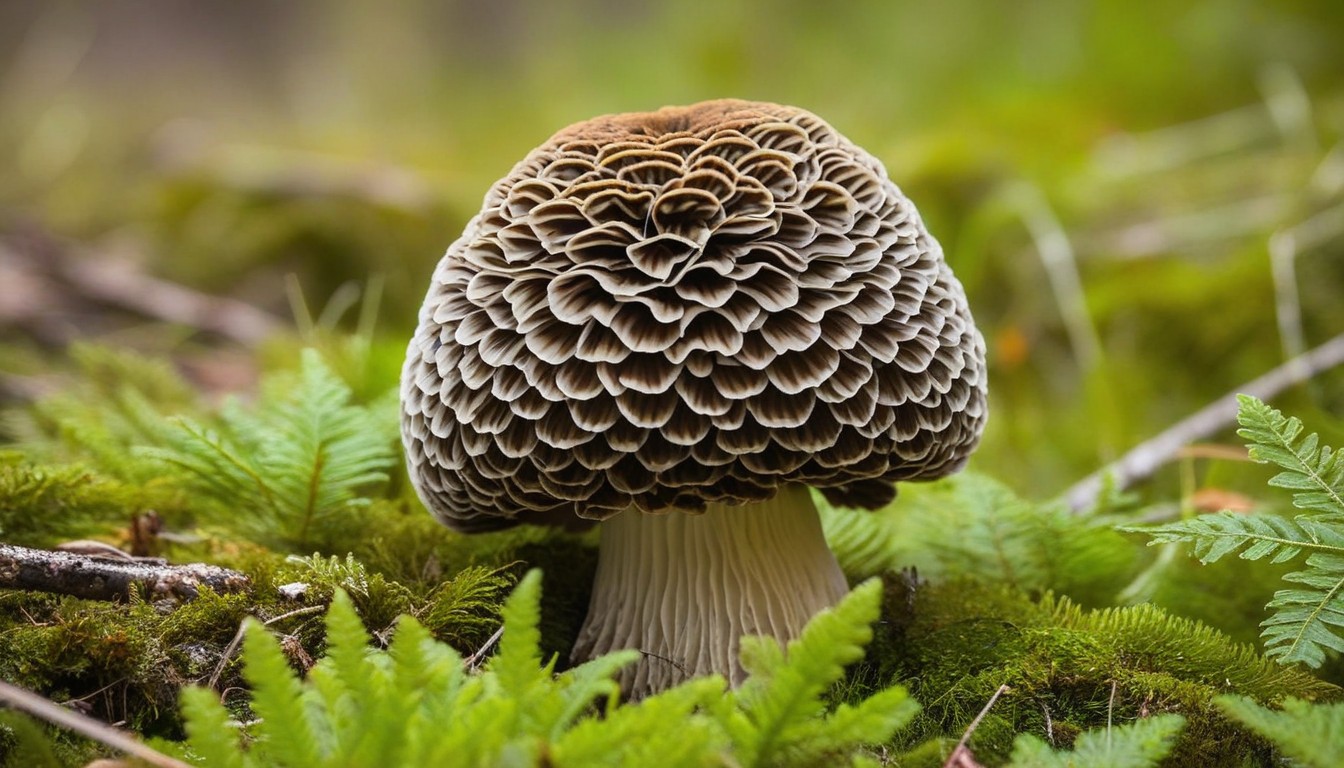
Morel mushrooms are not only prized for their unique flavor and texture, but their culinary versatility as well. Whether sautéed, roasted, or fried, morel mushrooms can add depth and complexity to a variety of dishes.
For a simple and delicious preparation, try sautéing morel mushrooms in butter and garlic. The earthy flavor of the mushrooms pairs perfectly with the buttery richness of the sauce. Serve them as a side dish or atop a steak for an indulgent and satisfying meal.
For a more complex dish, consider making a morel mushroom risotto. The flavor of the mushrooms enhances the creaminess of the rice and the richness of the parmesan cheese. A sprinkle of fresh herbs and a drizzle of truffle oil can take this dish to the next level.
If you’re feeling adventurous, try incorporating morel mushrooms into unconventional dishes such as morel mushroom and goat cheese tartlets or morel mushroom and fiddlehead fern quiche.
Morel Mushroom Sauté Recipe
|
Ingredients: |
Instructions: |
|---|---|
|
|
Experiment with different cooking techniques and flavor combinations to create your perfect morel mushroom dish. Happy cooking!
Additional Resources and Community
Exploring the wilds of Georgia in search of morel mushrooms can be a fun and exciting passion. Whether you’re a seasoned forager or just starting, connecting with like-minded folks can enhance your experience. Below are some online resources and local groups where you can find more information, ask questions, and share your foraging stories.
Online Forums
Joining a community of morel mushroom enthusiasts is an excellent way to connect with others who share your passion. Popular online forums where you can discuss your experiences and find valuable information include:
- Morels.com
- Shroomery.org
- Mushroom-forum.org
Local Groups
Meeting up with other foragers in your area can be a great way to share tips and tricks. Check out the following local groups that focus on foraging and wild edibles:
|
Group Name |
Location |
Contact Info |
|---|---|---|
|
Georgia Mushroom Club |
Atlanta |
info@geomushroomclub.org |
|
Savannah Foragers |
Savannah |
Meetup Page |
|
North Georgia Wild Foods Meetup |
Blue Ridge |
Meetup Page |
By tapping into these resources, you can expand your knowledge, form new friendships, and become a skilled morel mushroom forager in no time. So why wait? Join the community and explore all the wonders that Georgia’s natural landscapes have to offer.
Conclusion
Morel mushrooms are a true delight to forage, and lucky for us, they can be found in Georgia’s diverse landscapes. Understanding their habitat, seasonality, and weather patterns is key to successfully finding these elusive fungi. It’s important to follow regulations and practice ethical foraging to ensure the sustainability of morel mushroom populations. Armed with expert tips, suitable equipment, and an adventurous spirit, you can embark on a rewarding morel mushroom hunting experience in the Peach State. And don’t forget, the culinary possibilities with morel mushrooms are endless, adding unique flavors and textures to any dish. Why not give it a try and impress your family and friends with delicious recipes featuring this prized fungus? Join the vibrant morel mushroom community, connect with fellow foragers, and expand your knowledge about one of nature’s most fascinating offerings. Happy hunting!
FAQ
Can morel mushrooms be found growing in Georgia?
Yes, morel mushrooms can be found growing in the state of Georgia. Georgia’s diverse landscapes provide the ideal conditions for these highly sought-after fungi to flourish.
What are the characteristics of morel mushrooms?
Morel mushrooms are distinct in appearance, with their cone-shaped caps and honeycomb-like texture. They have a rich, earthy flavor that adds depth to various dishes, making them highly prized by foragers and chefs.
What is the habitat of morel mushrooms?
Morel mushrooms prefer specific habitats, such as wooded areas, particularly near ash, elm, and apple trees. They also thrive in areas with well-drained soil and moderate moisture levels.
When is the ideal season for morel mushroom hunting in Georgia?
Morel mushroom season in Georgia typically occurs in the spring, usually between March and May. The availability of morel mushrooms can vary based on weather patterns and other factors.
Where are the best locations for morel mushroom hunting in Georgia?
Morel mushrooms can be found in various locations across Georgia, including forests, riverbanks, and wooded areas near ash, elm, and apple trees. Exploring these habitats can increase your chances of finding these prized fungi.
What are some expert tips for successful morel mushroom foraging?
To enhance your morel mushroom foraging experience in Georgia, experts recommend carrying a mesh bag or basket for collecting mushrooms, walking slowly and attentively, and focusing on areas with suitable habitat and where previous sightings have been reported.
What regulations and ethical considerations should be followed for morel mushroom hunting?
When searching for morel mushrooms in Georgia, it is important to follow any relevant regulations, such as obtaining permits or adhering to foraging limits. Additionally, practicing ethical foraging, which includes leaving enough mushrooms behind for future growth and respecting the environment, is crucial.
How can I differentiate morel mushrooms from poisonous look-alikes?
It is essential to be able to differentiate morel mushrooms from potentially toxic look-alike species. Familiarize yourself with common look-alike mushrooms found in Georgia, such as false morels, and educate yourself on their distinguishing features to avoid accidental ingestion of poisonous mushrooms.
What are some culinary delights and recipes featuring morel mushrooms?
Morel mushrooms offer a unique flavor and texture that can enrich various dishes. They are often used in sauces, risottos, pastas, and paired with meats. Exploring recipes that feature morel mushrooms can elevate your cooking to new heights.
What additional resources and community exist for morel mushroom hunters in Georgia?
There are online forums, local groups, and other resources available that can help you connect with fellow morel mushroom hunters in Georgia. These resources provide opportunities to share tips, experiences, and expand your knowledge about these fungi.

